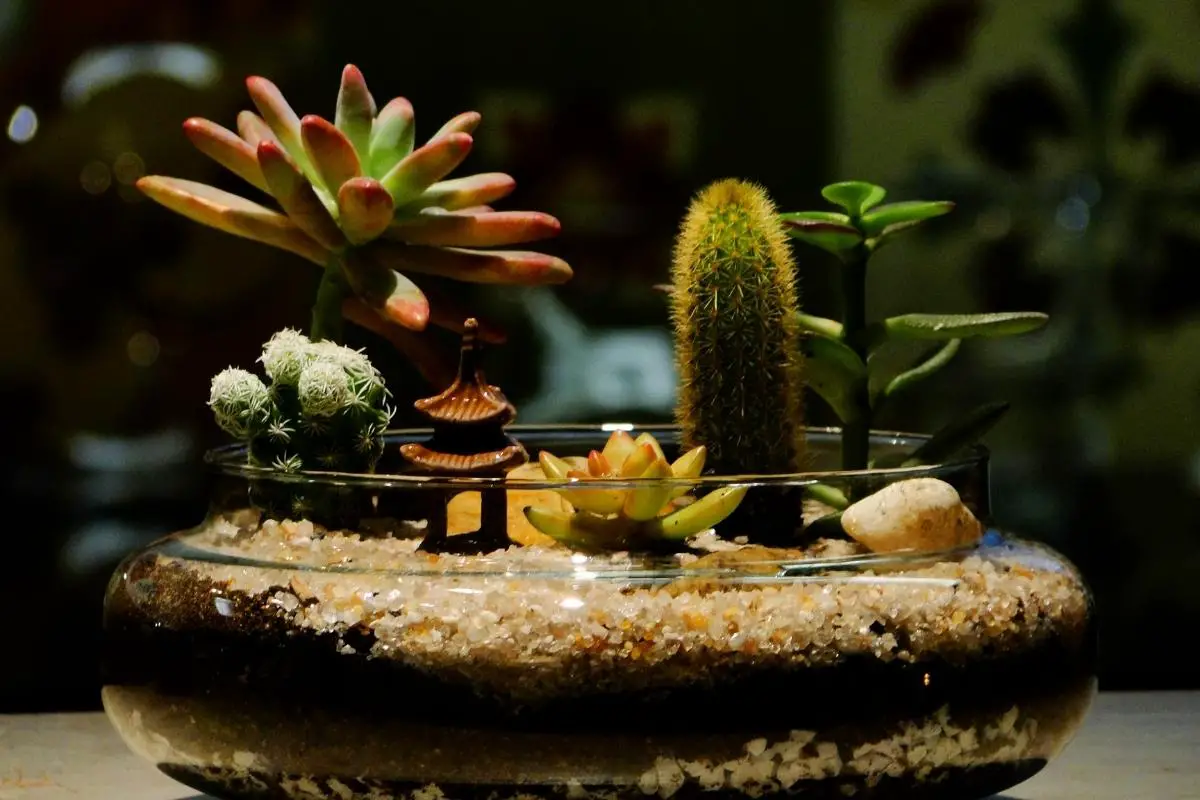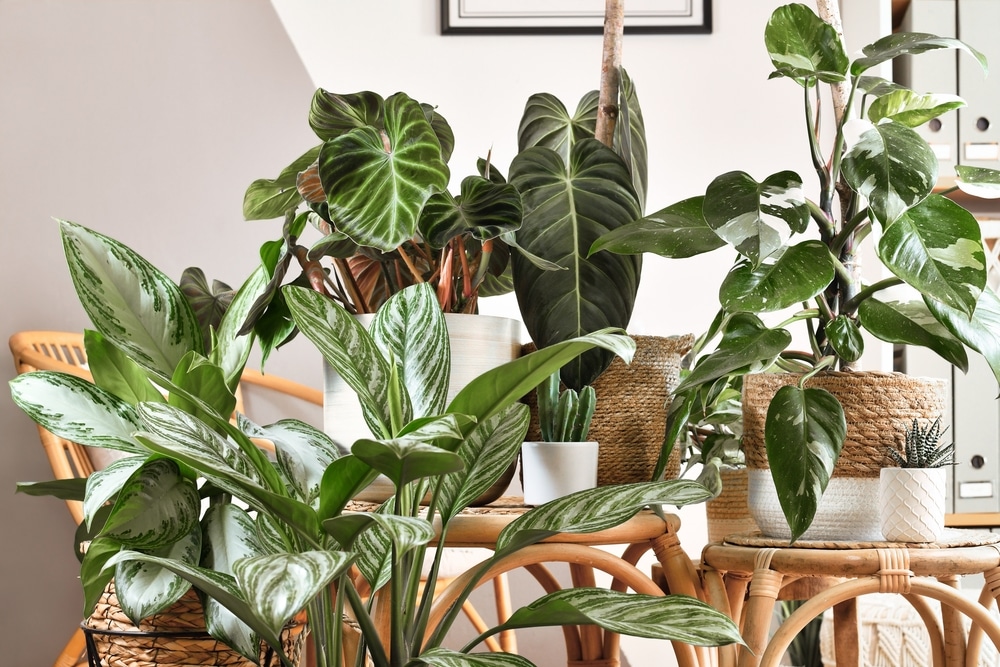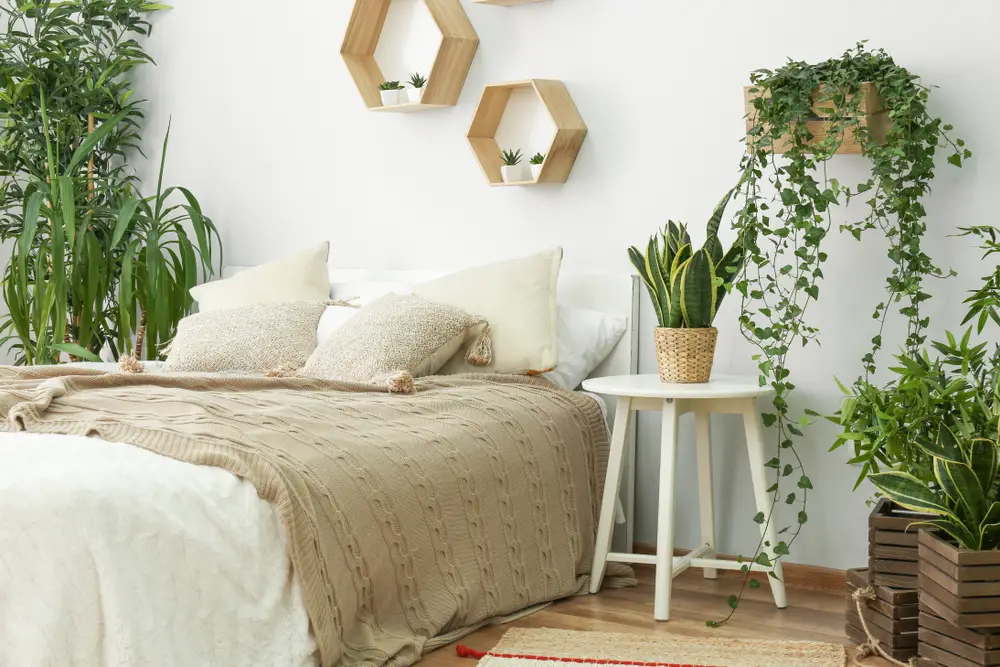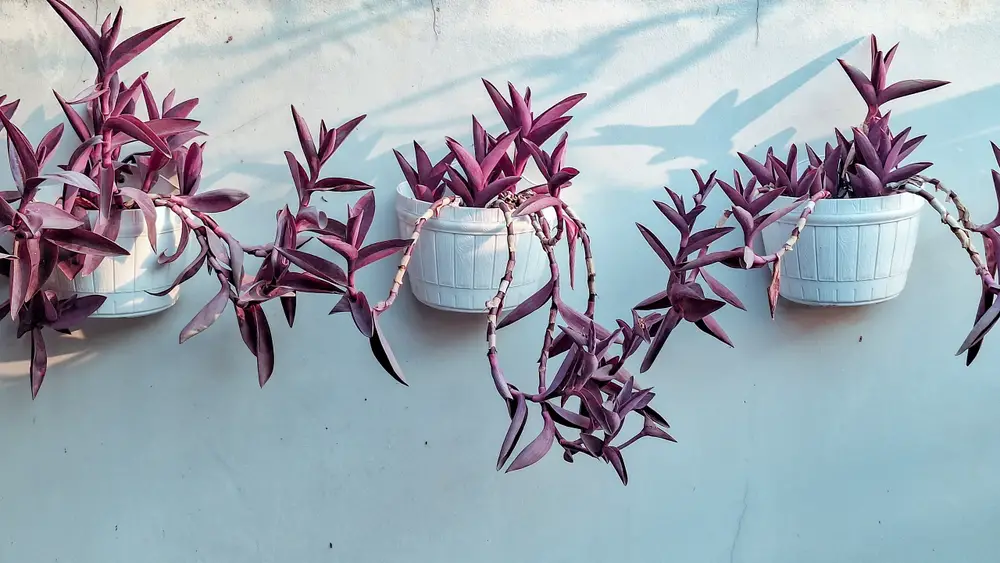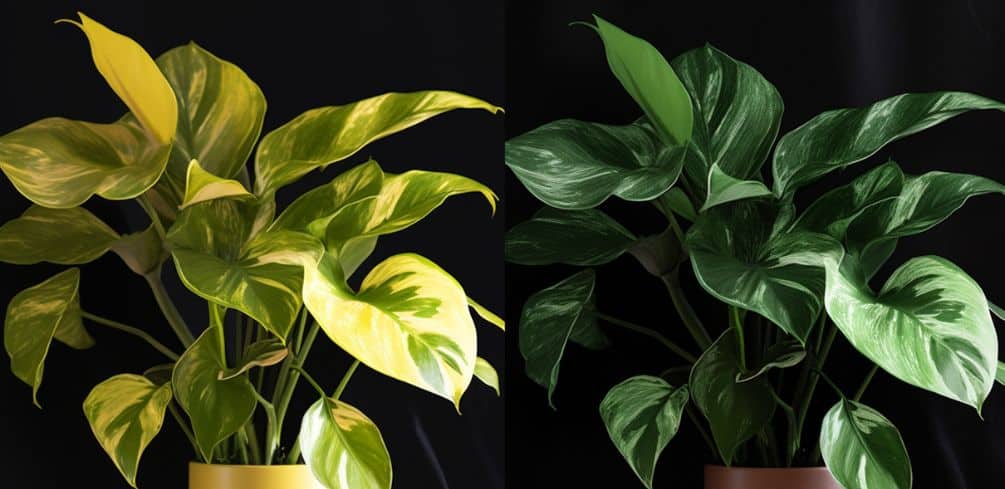Terrariums are a lovely way to showcase your special succulents and houseplants.
They resemble a little garden display.
There are several ways to construct a terrarium, but you should begin with the proper base of soil layers to maintain your terrarium and plants in good condition.
Therefore, the substrate you use to create your terrarium will influence its success or failure.
Making a terrarium is like constructing a house.
For your plants to flourish, you’ll require:
- a strong foundation
- excellent drainage
- precise conditions
Most plants require soil to support them and supply oxygen, water, and nutrients to their roots.
Our Main Goal: You can build a terrarium that appears great and provides an excellent habitat for plants to grow by carefully creating the environment.
How to Layer Terrarium Substrate?
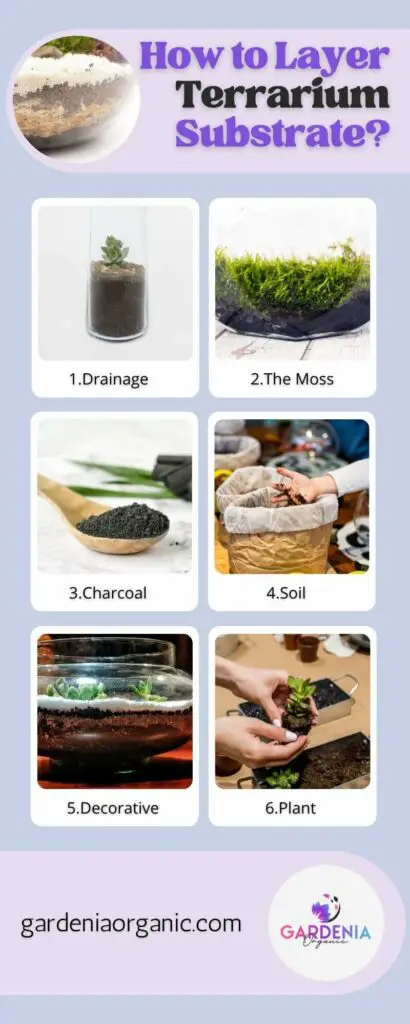
Drainage Layer
The drainage layer is necessary to safely keep excess water at the bottom of the terrarium without awning the roots and endangering root rot.
It is typically the very base layer, though some people choose to add a decorative layer or charcoal.
Place between 1-2 inches of drainage substance in the base of your terrarium, depending on its size.
Don’t skip on this layer because it will allow surplus water to drain away from the plants, preventing them from sitting in water and developing rotted roots.
Pea gravel is a popular drainage layer, but you may also use tiny river pebbles, colorful aquarium gravel, or fascinating little rocks that you have gathered.
Nice Touch: Decorative stones, marbles, and sea glass are also excellent choices.
The Moss Layer
On top of your drainage layer, add a layer of sphagnum moss or dried moss.
This keeps the soil from soaking through and absorbs part of the extra moisture. This layer will provide texture and color to your terrarium’s middle layers.
Ensure that it is deep enough to prevent soil from seeping through to the drainage area.
Layer of Charcoal
This is not a mandatory layer; however, it is critical for the condition and longevity of your terrarium.
This layer serves as a filter in your terrarium:
- It’s removing pollutants
- It is preventing toxin smells from forming
- It works well above the moss layer
However, some individuals add it at the base of the terrarium.
Your terrarium can still operate without this layer, but you will have to be extra cautious to keep the conditions optimal.
Soil Layer
The soil layer is where your plants will thrive.
It acts as an anchor for the roots and supplies the nutrients your plants require to develop.
Consider the sort of terrarium you are creating and select the type of soil based on the plants you intend to place in your terrarium.
If you’re going with tropical plants, you’ll want to look for:
- aeration
- adequate drainage
- water retention
The thickness of this layer will be determined mainly by the size of your plants.
It must be large enough to permit the most significant root ball while allowing enough for the roots to develop on both sides.
Decorative Soil Layer
Covering the soil with ornamental stones, putting figurines among the plants, or installing waterfall elements are standard methods to create decorative layers.
One thing to note is that you will want non-reactive decorations.
That is why stones, petrified wood, and crystals are excellent choices since they will not deteriorate or rot away over time.
Plant Layer
Selecting your plants is, of course, one of the most pleasant aspects of constructing the terrarium.
Tiny plants are preferable for smaller terrariums since they will not crowd each other out as they grow.
Because they have varied moisture requirements, you must stick to one type of plant, such as cactus, all tropical plants, or succulent plants.
Remember This: Succulent terrariums require a drier environment with an open cover and less moisture, but tropical terrariums can have closed lids with more humid, wet conditions.
Open and Closed Terrarium Substrate
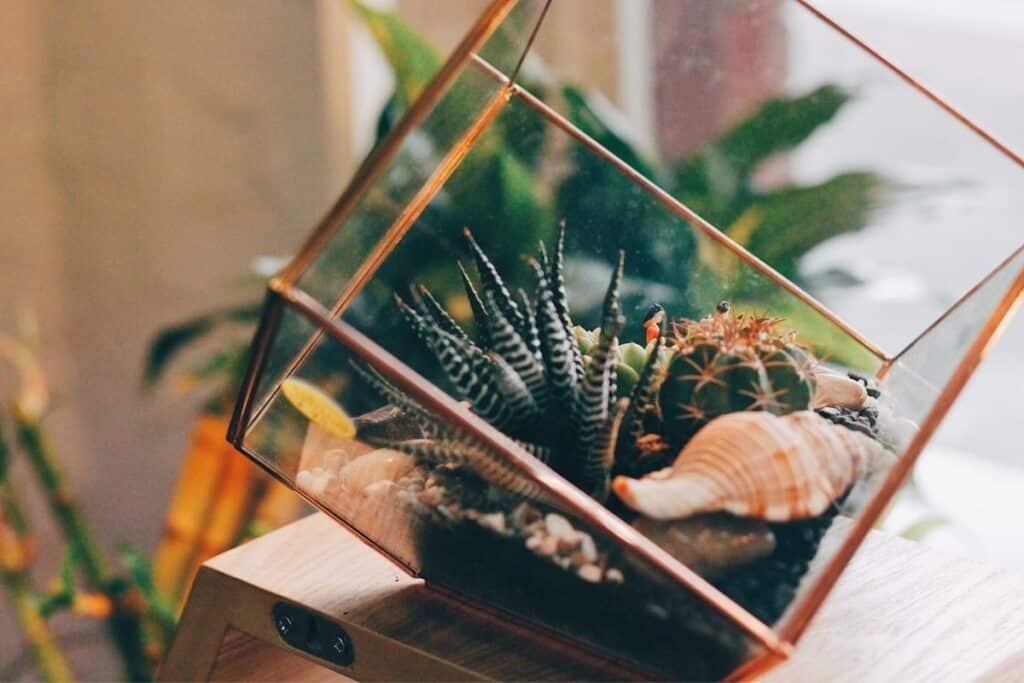
When creating your terrarium, one of the first decisions you’ll have to make is whether you want a closed or open terrarium.
Closed Terrarium
A closed terrarium features a lid that allows moisture to accumulate inside. These are ideal for tropical plants that require increased humidity as well as damp but not soggy soil.
The water cycle will be restricted in a closed terrarium with plenty of light. Water will evaporate, condense on the container’s walls, and then drop back into the soil.
Since there is no place for water to pass through, the container will remain wet to the same degree as the day you close it.
Open Terrarium
An open terrarium is healthier for succulents and cactus because it enables moisture to dissipate. Succulents, cactus, and even air plants will thrive in an open terrarium, but they would perish in a closed terrarium.
Open terrariums can accommodate a considerably more comprehensive range of substrate characteristics because you can easily modify your watering to solve any concerns.
It Works: If you want a more manageable approach, you may improve the water retention of your substrate using coconut coir or something similar so that you can water less frequently.
Recommended Terrarium Soil/Substrate
Coir
Coco coir is a fibrous substance derived from coconut husks.
It is available in several forms, ranging from a single dry brick to bags of coarse chips and finely crushed powders.
Although the larger chips or fibers may give more drainage, the powder is easier to plant in.
It’s very light and fluffy, which means you’ll get a lot of root aeration, a lot of moisture retention, and it won’t compress over time.
Coir, on the other hand, is well-known for its durability and dependability. It will not degrade in your terrarium because it is a polished substance.
It is not vulnerable to pests, and you can manage drainage and moisture more readily than with random soil types.
Sphagnum Moss
Sphagnum moss has become a true mainstay in the terrarium and vivarium business in both live and preserved forms, but preserved is ideal for substrates.
This material, like coir, is ideal for terrariums because of its exceptional water retention and fluffy texture.
Antibacterial qualities of Sphagnum moss assist in decreasing bacterial development and therefore delay the pace of deterioration.
It is frequently used as a growth medium on its own. It is also used as a substrate barrier and as a supplement to mixes.
Sphagnum moss is so flexible that it may be both a foundation material and a supplement depending on how you utilize it.
Aquarium Soil
Aquarium dirt is ordinary soil that has been baked into dry pellets.
It’s an intriguing choice since it has all the nutrients and beneficial development factors in conventional potting soil but with considerably more excellent drainage.
This is because the pellets are spherical and do not pack together in a regular shape.
They’re also relatively robust, so they’ll withstand compaction for years. Aquarium soil has lately gained popularity, and it is perhaps the only substrate that can be utilized on its own.
Good To Know: Though difficult to plant in on its own, it works better as a foundation than an all-in-one solution.
Terrarium Soil/Substrate Supplements
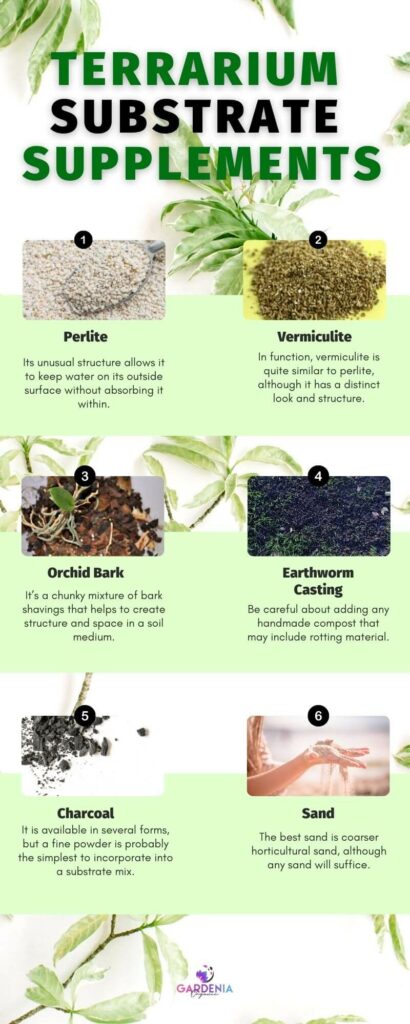
Perlite
Perlite is a kind of white volcanic glass that resembles polystyrene balls.
It’s lightweight, absorbent, and valuable in tropical terrariums.
Its unusual structure allows it to keep water on its outside surface without absorbing it within, making it an excellent alternative for providing constant water to plants without resulting in a wet mix.
The material’s granular texture also aids in the aeration of a substrate mix. A little perlite goes a long way.
Vermiculite
In function, vermiculite is quite similar to perlite, although it has a distinct look and structure.
It is a mineral that resembles flaky brown pebbles.
It retains water much better than perlite and can be an excellent addition to substrates for tropical plants because they need moisture.
Orchid Bark
It is a more natural approach to increase soil granularity and aeration.
It’s a chunky mixture of bark shavings that helps to create structure and space in a soil medium.
Bad News: The problematic aspect is finding a tiny combination for terrariums; it is frequently relatively thick.
Earthworm Casting
If you’re using pure coir as your soil foundation, you’ll need to supplement your growing medium with minerals.
Be careful about adding any handmade compost that may include rotting material; instead, use commercial compost wherever feasible.
Earthworm castings are an excellent and readily available alternative. It is an entirely natural fertilizer that is also well-draining and has a high water-retention capacity.
Charcoal
Its extremely porous nature allows it to bond to terrarium pollutants, making it a popular “cleaning” substance.
Because of its porosity, it can retain moisture effectively and is frequently regarded as storing and supplying nutrients to plant roots.
It is available in several forms, but a fine powder is probably the simplest to incorporate into a substrate mix.
Sand
Sand may be easily added to your growing medium to improve aeration and drainage.
The best sand is coarser horticultural sand, although any sand will suffice. If you want to build a desert terrarium, you’ll need a lot more sand.
The same is true for any cactus or succulent combination. It is preferable to utilize black sand when available.
This manner makes the substrate less apparent, and the darker substrate contrasts nicely with green plants.
Watering and Lighting in A Terrarium
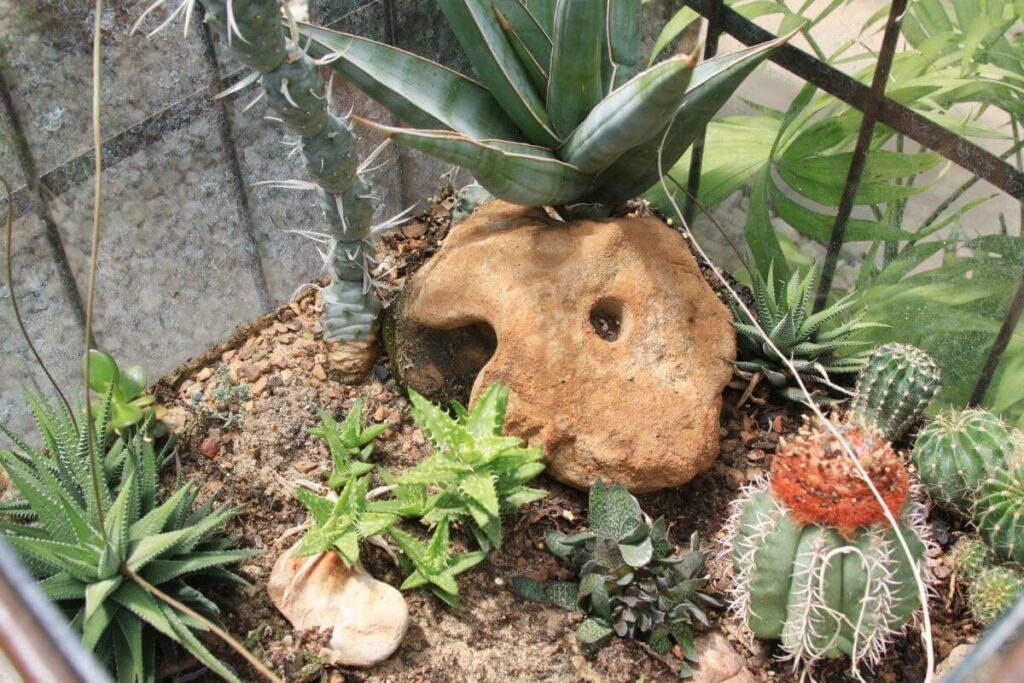
The tropical terrarium despises being in direct sunlight.
Inside, a bright room with indirect morning sunshine is the ideal setting. A tropical terrarium should be watered once or twice a week so that the soil is wet but not inundated.
It also prefers to be misted with a spray bottle of water once a week. Consider a rainforest.
The succulent terrarium can withstand some early direct sunshine followed by indirect solid afternoon light.
Just keep in mind that the succulent terrarium will appreciate if you let it rest outside for a few hours in indirect light once a week (not in the cold). The succulent terrarium, unlike cactus, enjoys a sip but not a deluge.
Spritz each succulent once per week to two weeks during the warmer months of the year using a spray bottle.
You may get away with spraying gently once every ten days during the winter months.
Follow Your Intuition: When your terrarium gets thirsty, the plants will respond and seem dry.
Final Thoughts
Terrariums are not suitable locations for plants to grow unless drainage and soil layers are carefully managed.
The decorative layer is where you may personalize your terrarium. This layer may be more moss or something unusual, such as colorful aquarium gravel.
You may also use layers of ornamental sand if you want. These things will protect the roots of the plants, assist the roots in remaining rooted in the soil, and retain moisture where it is most required.
To make your layers look more decorative, ensure your layers are thick enough so that you can notice the difference between them.
You may also form the layers to design a flow inside them, such as raising one side and lowering the other.
You might create eye-catching designs by layering different colored gravel or sand, and you could even coordinate the colors of the stones and sand to the colors of the flower blooming inside.
